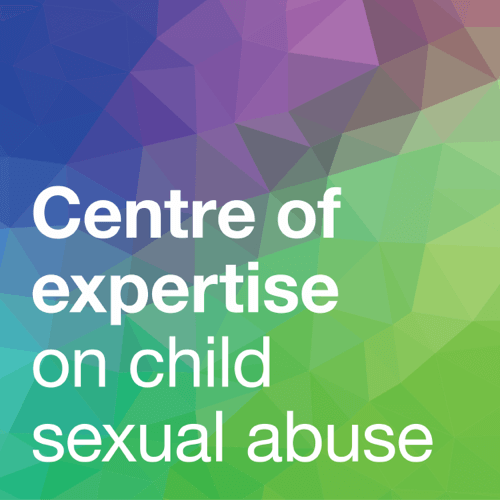What police professionals need to know about child sexual abuse
Learn more about child sexual abuse based on key research and statistics: what it is, who harms children, where it takes place, the impact on children and, crucially, what you as a police professional can do in response. It is designed for all police professionals, whether you’re the attending officer responding to a call or the officer assigned to a case.
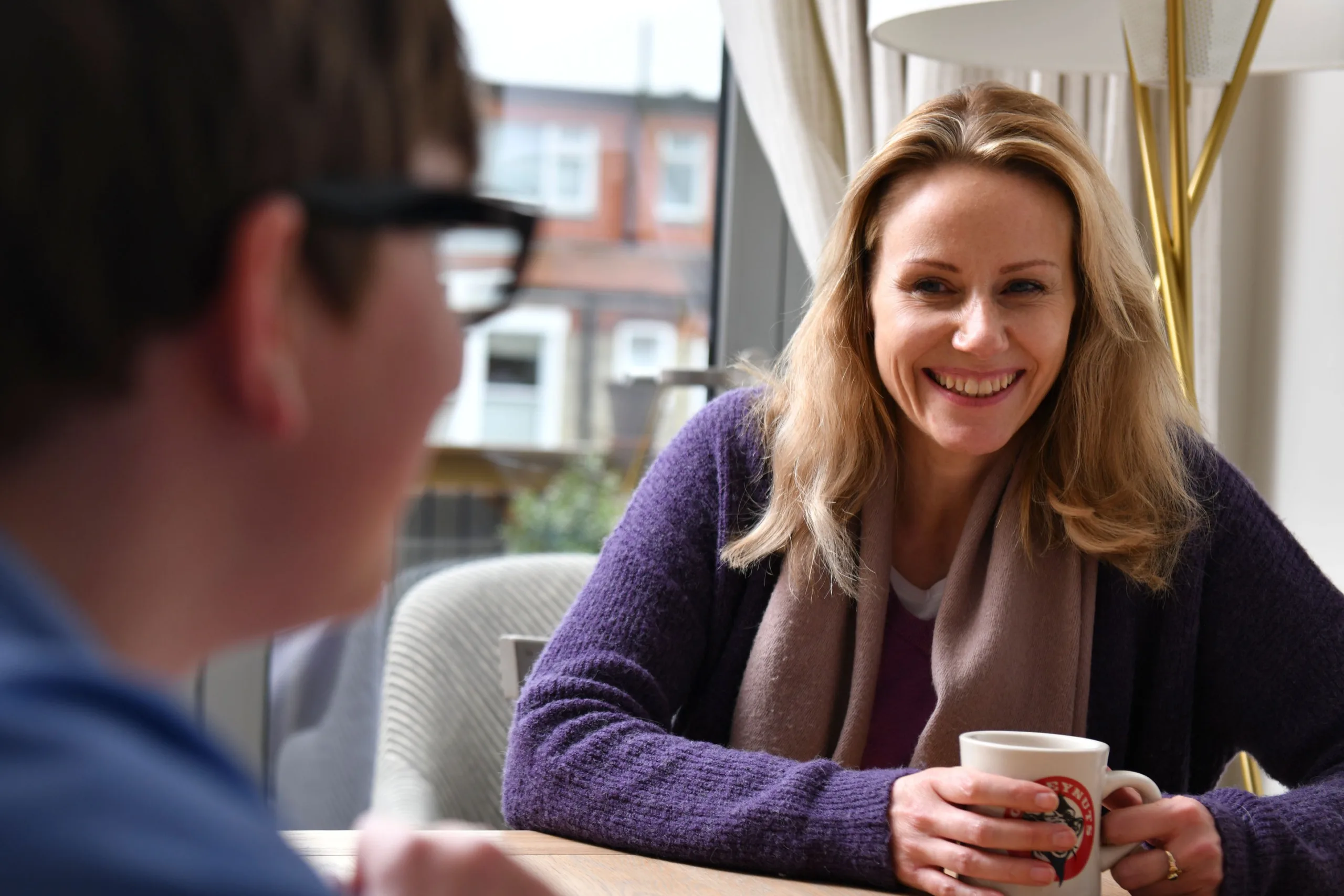
Jump ahead to any topic you like
Remember, it is never a child’s responsibility to prevent abuse, protect themselves or make the abuse stop. But by better understanding child sexual abuse, having conversations and highlighting concerns, we can all play a role in better protecting children.
Throughout the 10 sections, you’ll find blue boxes containing key takeaways, prompts and signposts for you to consider when faced with concerns of child sexual abuse. Scroll to the bottom of this overview to explore further research and practical resources for professionals to help identify and respond to child sexual abuse. Download the Welsh translation of this resource here.
lf you are worried that a child may have been or is being sexually abused, or you are concerned about someone’s behaviour, it’s important to take action. Visit our Get Support page for contact details of organisations who can help
1. Child sexual abuse is more common than most people think, and far more children are sexually abused than are ever identified or responded to.
For police professionals..
Child sexual abuse is common, so you should expect to encounter victims and survivors and see potential signs and indicators of child sexual abuse in your daily work. These may be physical signs, or they may relate to the behaviour of the child and/or people around them, or to the child’s environment. It’s important to be alert to these signs and indicators, as children are unlikely to tell you (or anyone else) verbally that they are being sexually abused; some may not even realise that what is happening to them is abuse.
Remember that children – boys as well as girls – from all social and ethnic backgrounds are sexually abused.
To improve your identification of child sexual abuse during calls and visits that are not necessarily related to child sexual abuse, we recommend that you use our Signs and Indicators Template routinely.
You can refer to the ‘police’ sections of the CSA Centre’s Child Sexual Abuse Response Pathway to help guide your practice when responding to allegations or concerns. And you can access the Hydrant Programme’s Practice Advice for Investigating Child Sexual Abuse and Exploitation, and its Practice Advice for Investigating Online CSAE, by emailing HydrantEnquiries@southyorkshirepolice.uk.
Although initially developed to improve the police response to offences against adults, the national operating model for investigating rape and serious sexual offences also provides guidance in cases where these offences are committed against children. Additionally, your force may have a specialist department, dedicated to investigating these offences, which can give you advice and support.
2. Children can be sexually abused in many different ways, by different people and in different places and situations, including online.
Child sexual abuse is defined by UK Government as:
forcing or enticing a child or young person to take part in sexual activities, not necessarily involving a high level of violence, whether or not the child is aware of what is happening. The activities may involve physical contact, including assault by penetration (for example, rape or oral sex) or non-penetrative acts, such as masturbation, kissing, rubbing, and touching outside of clothing. They may also include non-contact activities, such as involving children in looking at, or in the production of, sexual images, watching sexual activities, encouraging children to behave in sexually inappropriate ways, or grooming a child in preparation for abuse.
- Children can be sexually abused in family settings and outside the home, and they can be abused by adults, young people and children.
For police professionals..
Because children may have experienced multiple forms of sexual abuse, sometimes at the same time, it’s important that you gather potential evidence from multiple sources, speaking privately with possible witnesses such as other family members. Ensure your body-worn camera is switched on to capture all possible evidence, whether oral or visual. And record details of any visible physical injuries that the child has. Evidence can also be gathered from bedclothes, clothing, telephones, diaries, video cameras, computers, games consoles or other electronic devices. Where you suspect that items may contain evidence, you should secure and remove them from the home, even if you are the attending officer; this action may prompt further lines of enquiry for other officers who take on the investigation.
When considering the removal of items belonging to the victim and/or other children, take care to minimise disruption. Consider whether devices can be triaged at the scene, and whether scene photographs can sufficiently capture the necessary evidence. Where it is appropriate to remove mobile devices, arrange for evidence to be downloaded from them as soon as possible so they can be returned. Explain to the child why it is necessary to take any personal items, and whether, when and how they will be returned – but do not make any promises unless you are certain they can be kept.
- Almost half of all child sexual abuse offences reported to the police in England and Wales in 2021/22 took place in the family environment. That means the abuse was by parents, siblings, grandparents or anyone considered ‘one of the family’.
- Another form of child sexual abuse is child sexual exploitation, where an individual or a group uses their power to force, manipulate or persuade a child or young person to take part in sexual activities.
- Children can be sexually exploited through direct physical contact, through technology, or both at the same time. While children and young people may appear to cooperate with those exploiting them, professionals working with children must remember this cannot be taken as consent. Instead, these children are likely to be subject to many forms of grooming, coercion and control.
For police professionals..
The average age at which concerns of child sexual exploitation are first identified is 12 to 15 years – but younger children are also at risk of sexual exploitation, especially through technology.
Sexually exploited children and young people rarely approach the police directly, unless they are in immediate danger. They may not consider themselves to be victims and may believe they are in love, thinking police engagement is unnecessary.
Any child or young person may be sexually exploited, although some are particularly vulnerable. Be alert to factors such as prior abuse in the family, deprivation, homelessness, substance misuse, disability, being in care, running away/going missing, and being associated with gangs. Indeed, it may be one of those factors, or criminal activity or antisocial behaviour resulting from it, that first brings you into contact with a child or young person who is being sexually exploited.
The Home Office’s Child Exploitation Disruption Toolkit provides advice on understanding the extent and nature of child sexual exploitation in your area.
- It is common for those who sexually abuse children to use ‘grooming’ techniques to gain compliance and ensure a child’s silence. They may use threats and force, but often use rewards, favouritism and alienation from friends and family, or take advantage of the normalisation of potentially abusive activities. Similar techniques may be used on families and colleagues to secure access to victims and prevent detection. This can take place online and in person.
For police professionals..
Do not accept information at face value: enquire deeply and challenge your own assumptions. (See Policing Guidance on Curiosity.)
- A significant proportion of child sexual abuse is carried out by other children and young people, and sexual harassment and abuse between students in school is widespread and can become ‘normalised’.
- ‘Harmful sexual behaviour’ is a term used to describe a range of behaviours by children and young people under 18, from those considered ‘inappropriate’ at a particular developmental stage to ‘problematic’, ‘abusive’ and ‘violent’ behaviours.
- After sexual abuse by a parent, harmful sexual behaviour by siblings is the second most common form of child sexual abuse within the family environment reported to police.
For police professionals..
If you are investigating an allegation or concern about a child’s harmful sexual behaviour, whether it was directed towards someone outside the home or against a sibling or other relative, it’s important to exercise professional curiosity.
Some professionals may minimise the seriousness of a child’s abusive sexual behaviour because they find it difficult to accept that children can behave in sexually abusive ways, especially towards siblings; others may catastrophise sexual behaviour by a child which is in fact developmentally appropriate. When investigating an allegation or concern, it’s important to assess carefully the nature of the child’s behaviour, working with other professionals, so you can determine the appropriate police response and ensure that all the children and their parents/carers are supported.
Harmful sexual behaviour is often a symptom of other problems: children displaying harmful sexual behaviour are likely to have a history of adverse childhood experiences and family difficulties. Take time to ask the child and those around them more searching questions, going beyond the immediate behaviour; the child may have been sexually abused themselves, and be at risk of further harm.

- One in 10 victims and survivors of child sexual abuse involving physical contact were abused by a person in a position of trust or authority. This includes people working in institutional settings like schools, hospitals and residential care, or in settings such as sports clubs or religious groups.
- Today, digital technologies feature in almost all types of child sexual abuse. This can include through sexual conversations with children online, persuading children to pose naked or perform sexual acts on video or via webcam, taking images or videos of sexual abuse, viewing and/or sharing images, or communicating with a child online with the intent of abusing them in person later.
- In a US survey, one in six young adults (aged 18–28) reported being sexually abused before the age of 18 – by intimate partners, friends, relatives or acquaintances – either online or through phone messages. This included being forced or threatened to provide intimate images or videos, and unwanted sexual talk or questions.
- More recently, artificial intelligence tools are being used to produce convincing, lifelike images of almost anything. These tools are increasingly being used for harmful purposes, including the creation of child sexual abuse images. It’s important to remember that it is illegal to create, view or share any images of child sexual abuse, including when they are artificially created.
For police professionals..
A person suspected of sexually abusing children may already be known to the police, so you can support a multi-agency response to child sexual abuse concerns by checking police records for intelligence. Consider checking the Police National Computer (PNC), the Police National Database (PND) and the Violent and Sexual Offender Database (VISOR), as well as local systems, for all previous offences, investigations and ‘flags’ – and share these, where relevant, with other child protection professionals involved in the case.
In certain limited circumstances where a ‘pressing social need’ can be established, you may be able to make a common law police disclosure (CLPD) of information about an individual to their employer or regulatory body so that risk mitigation measures can be considered. For more information, see the 2017 CLPD provisions and your force’s guidance.
Remember that the Child Sexual Offender Disclosure Scheme allows you to protect a potential victim under the ‘right to tell’, if you have concerns about the risk a person poses.
3. Children are most often sexually abused by someone they know and trust. People who abuse come from all walks of life, are not readily distinguishable, and sometimes are still children themselves.
- Over one-third of victims and survivors of child sexual abuse involving physical contact said they were abused by a friend or acquaintance of theirs or their family’s. More than one in 10 said they were abused by their father/stepfather in childhood. Almost a quarter said their sexual abuse involved a family member other than a parental figure.
- Some children are abused by other children and young people. In one US survey, roughly one-third of victims/survivors of child sexual abuse in online contexts said they had been abused by other under-18s, just over a third by people aged 18–25, and only one in seven by older adults.
- Where ethnicity was recorded, 88% of the people prosecuted for child sexual abuse offences in 2022 were White.
For police professionals..
Children are unlikely to verbally tell you they are being sexually abused – so, when visiting the home of any child for any reason, consider people’s behaviour around the child:
- Do they control, or attempt to control, children and other adults in the family?
- Do they normalise inappropriate and sexual behaviours?
- Are they involved in the child’s intimate care?
- Do they limit contact with other family members?
- Do they gatekeep the child’s contact with other professionals?
Any one of these concerns alone does not indicate abuse, but you can use our Signs and Indicators Template to build a picture of your concerns and then take informed action. Work with other professionals around the child to ensure you capture their concerns too.
Child sexual abuse is a gendered issue. In 2022/23, almost 99% of individuals convicted of child sexual abuse were men. However, both men and women can and do sexually abuse children.
There are a range of complex pathways into sexual offending and it is not possible to distinguish those who sexually offend from those who don’t. People who sexually abuse children come from all walks of life.
4. Any child, of any age, may be sexually abused. It is just as common as other forms of childhood abuse – though some children are more likely to be abused than others.
- Children who have been neglected are five times as likely as other children to have also experienced child sexual abuse.
- People who lived in a care home as children were nearly four times as likely as to have experienced child sexual abuse.
- Those who lived in a household with someone with a long-term mental health problem or disability, or with someone misusing alcohol or drugs, were three times as likely to have been sexually abused as those who did not.
More than half of adults who described being sexually abused in childhood said they had also experienced other forms of childhood abuse. One in six said they had been physically, emotionally and sexually abused, and had witnessed domestic violence, as children.
Child sexual abuse has been found to be just as common as childhood physical abuse. Among adults who described being sexually abused in childhood, one-third said they were first abused before the age of nine, another third said the abuse started between ages nine and 12 and the remaining third said it started between the ages of 13 and 15.

Age at which adults said they were first abused as a child
- Disabled children are at a higher risk of sexual abuse than non-disabled children. They are more dependent on caregivers, experience greater barriers in communication, and are less likely to have their abuse identified, particularly in a family setting.
- Child sexual abuse occurs across all ethnicities, but victims and survivors from minority ethnic backgrounds often face additional barriers in telling anyone and in accessing and receiving support.
For police professionals..
When visiting any home where there are concerns of domestic abuse, substance abuse and/or neglect, be alert to the heightened risk that child sexual abuse may also be occurring or have occurred. Some children may be at greater risk of sexual abuse – or may be less likely to talk about it – because of disability, their ethnicity, their sexual orientation or their gender identity.
Exercise professional curiosity when responding to all calls/repeated calls from children where there is no obvious crime or disturbance. Some behaviours may be disguised distress. There is still much that you can do to protect and support the child in these circumstances – you should first build a picture of your concerns using our Signs and Indicators Template, and then consider whether:
- there is intelligence about the child, their family and/or the suspect that can be added to the template
- your concerns warrant a prompt safeguarding referral or use of police powers to remove the child to a place of safety
- your concerns should be shared with other key professionals within your multi-agency safeguarding partnership/arrangements
- further monitoring is needed.
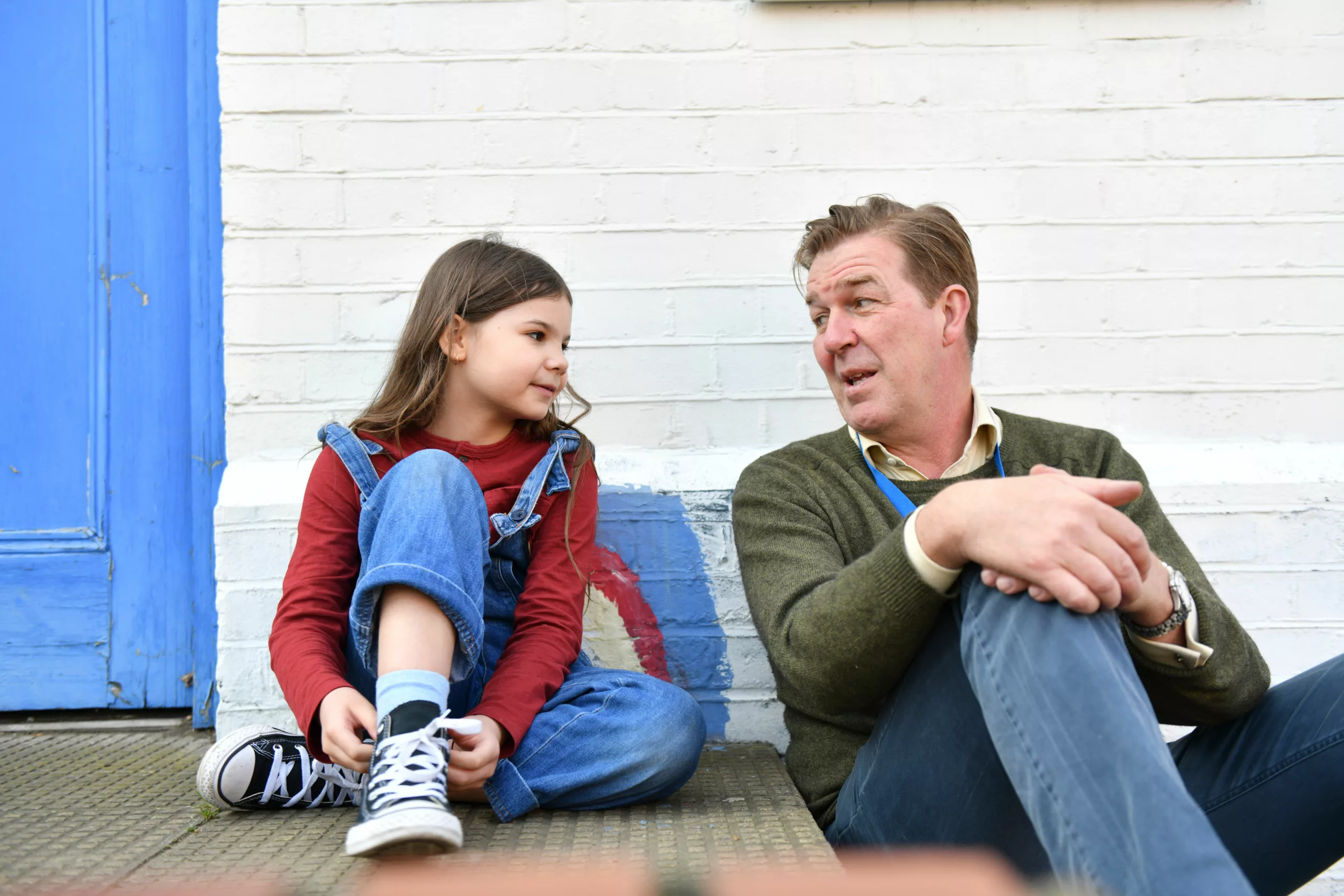
5. Most children do not tell anyone about sexual abuse at the time. All adults need to be alert and responsive to concerns. Anyone working with children must be confident in spotting the signs and indicators of child sexual abuse.
- The majority of victims and survivors of child sexual abuse said they never told anyone about the abuse at the time. In one research survey, one in five had never told anyone before.
- Children are more likely to speak to friends or family than a professional, and friends are typically the first to recognise when young people are struggling.
- There are lots of barriers preventing children from talking about sexual abuse, and many will feel unable to tell professionals directly what is happening – or recognise that they are being, or have been, abused. Many victims and survivors find that sharing their experiences, or understanding them fully, is only possible in adulthood.
- All professionals need to be confident they have the knowledge and skills to recognise when children might be showing them that something is wrong.
- Children may display different signs of having been abused, including emotional, behavioural and/or physical signs. Be alert too for indicators of harm in the people around the child, or vulnerabilities in the family or environment around them.
- It is important to understand these signs, explore concerns, and build a picture of what they may be showing. The CSA Centre’s Signs and Indicators Template provides a common language for professionals to discuss, record and share such concerns that a child is being, or has been, sexually abused, and to act on them.
For police professionals..
Research has shown that children and young people’s willingness to engage with the police is linked to factors including how they came to the police’s attention, their previous experiences of the police, their confidence in the police’s ability to make them safe, a concern that they will be disbelieved or judged, a sense of loyalty to the person(s) abusing them, and a fear of negative repercussions for themselves or their family. Ideas about masculinity, codes of ‘honour’ and previous criminal offending may also deter them from telling you about what has happened to them.
Showing that you are aware of these concerns is one way to begin a conversation and build trust.
6. You don’t have to be an expert in child sexual abuse to help a child if you think they are at risk, or to act when you have concerns. Safeguarding children must be everyone’s responsibility.
If you have any concerns that a child may have been sexually abused in any way, or is at risk of sexual abuse, the appropriate response in most cases is to contact children’s social care and/or the police. If you want to talk to someone about your concerns, you can contact the NSPCC Helpline on 0808 800 5000 and their specialist team will listen, advise and take any action needed. You can also find local support by searching our Support Services Directory.
- It is not a child’s responsibility to prevent abuse, protect themselves or make the abuse stop.
- No single agency can do this alone. All professionals need to focus on meeting the child’s needs, taking note of how they are feeling and what they hope will happen. The CSA Centre created an online interactive resource, the Response Pathway, which sets out how to respond to concerns of child sexual abuse at key points: from first concerns and initial safeguarding actions through to child protection and criminal justice responses. By working together, services really can help better protect and support children and their families.
- If you have concerns about a child, it’s important to think first ‘what if I’m right?’ rather than ‘what if I’m wrong?’ It is natural to hope your concerns don’t mean that a child is being sexually abused, and to worry about getting it wrong. But whatever your relationship to the child, it is important to focus on considering ‘What if I am right?’ The experiences of victims of child sexual abuse shows that, too often, adults don’t act on this question and children are left to be abused in silence.
- If you are a professional who already works with children, or vulnerable adults, it’s important to remember you already have the skills needed to have sensitive, potentially uncomfortable conversations with children and families. You don’t need to be an ‘expert’ or have specialist skills.
- Children need you to use the skills you already have, to lean into your concerns and to explore all possibilities of what might be happening to a child, and what you can do to support them and protect them from sexual abuse.
For police professionals..
Everyone brings their own history, experiences, and values to their work. For example, you may have personal beliefs about what constitutes normal sexual behaviour or what defines appropriate boundaries within the home – or you may have personal experience of child sexual abuse. It’s important to recognise that your experiences, especially when working with cases of child sexual abuse, may challenge these core beliefs. Reflecting on this can help you to ensure impartiality and sound judgement in your work.

7. Sexual abuse thrives in secrecy and silence. Society needs to confront the reality that this abuse does take place, and anyone working with children needs to feel confident in how to speak to children about it
- As a society, we need to talk openly about child sexual abuse: at home, at work, among friends, family and in our neighbourhoods.
- Although children and young people are more likely to tell friends or family than someone in a professional role, everyone working with children needs to be prepared to listen and respond sensitively, so that children feel safe to tell them if they are being sexually abused or are at risk.
- Children may not tell anyone that they have been abused. This could be because they are being threatened or manipulated, or because they fear the consequences of telling someone about the abuse.
- Children need help to tell. It should be a two-way interactive process that happens over time, between the child and adults around them. How adults respond to the signs of sexual abuse is pivotal in enabling a child to feel able to confide in them and express themselves further. Professionals working with children need to create a supportive environment where children can talk about their experiences and have an expectation of help.
- Children value support from professionals who are trustworthy, authentic, optimistic and encouraging; show care and compassion; facilitate choice, control and safety; and provide advocacy.
- It is important to remember that victims and survivors of child sexual abuse say they want adults to ask as early as possible, and to ask again, if they have concerns. In fact, being asked a second or third time gave them confidence that their experiences mattered, and reassured them that they would be listened to.
- The CSA Centre’s Communicating with Children Guide brings together research, practice guidance, and expert input – including from victims and survivors – to help give professionals the knowledge and confidence to build trust, start conversations, and act.
For police professionals..
Professional curiosity requires you to demonstrate strong communication skills, such as active listening and displaying empathy. Children need to feel you are giving them your time when talking to them: sit down with them, lower your radio volume (or wear your earpiece to reduce distraction), and maintain discussion at their eye level.
Children don’t care how much you know until they know how much you care.
There is a widespread perception among children and young people – especially those who are disabled or from a minority ethnic background, or who have been/are in care – that the police do not treat them fairly. Be prepared for them to appear uncooperative or even aggressive when approached by or engaging with you.
Be careful not to use language that may make the child think you are blaming them for what has happened – our Communicating with Children Guide contains advice on this.
Remember that, while it’s important to talk with the child about your concerns, you do not need the child to tell you they are being abused before you act on those concerns.
8. The experience and impacts of sexual abuse are different for every child

- Victims and survivors of child sexual abuse can be affected in a range of ways, but the impacts of abuse vary in their nature and extent. While the impact can be significant and life-long, people can, and do recover from sexual abuse and professionals can make a real difference, both at the time and in later life.
- No two people are affected in the same way, but impacts can include:
- Challenges with mental health and wellbeing, through anxiety disorders, depression, eating disorders and disturbances, sleep disruption and insomnia, and longer-term clinical psychiatric diagnoses such as post-traumatic stress disorder or personality disorders.
- Physical health changes across general health, gastrointestinal health, gynaecological or reproductive health, pain, weight, and general wellbeing. Physical impacts can often be linked to the victim or survivor’s mental health difficulties.
- Sexual functioning, and relationships in both adolescence and adulthood, may also be affected. Some adult victims and survivors may show protective parenting, but others may have difficulty creating and maintaining boundaries.
For police professionals..
When responding to any call involving a child’s behaviour (e.g. a child who is missing, a child who is displaying violent or sexually inappropriate behaviour for their age, or a child using substances), consider whether these behaviours may be an indicator that they have been sexually abused. This is an opportunity for professional curiosity, asking questions and maintaining an open mind.
- The impacts of child sexual abuse can be influenced by different factors. This might include the age when a child’s abuse started, how long it lasted, their relationship with the person that abused them, other childhood experiences, and attachment to parents/carers. Whether children told someone about the abuse at the time, and what happened when they did, may also be important.
For police professionals..
Whenever sexual abuse is suspected, the child should be offered a paediatric medical examination. Remember that this examination isn’t only about gathering forensic evidence – it also allows for a holistic conversation and assessment of the child’s general wellbeing and health needs, potentially helping to mitigate the impacts of the abuse.
When the suspected abuse is recent (within the past few days), try to arrange for the medical examination to take place before the Achieving Best Evidence (ABE) interview, and as soon as possible: some forensic evidence can only be obtained within 48 hours of the abuse. See the Faculty of Forensic & Legal Medicine guidance for details of the timescales for gathering different types of evidence, and seek advice from a sexual assault referral centre (SARC).
If the abuse is considered non-recent, a medical examination should be offered within two weeks of the decision to assess, usually after the ABE interview.
Read how you can best help the child before a medical examination in our Child Sexual Abuse Response Pathway practice guide.
9. Parents and carers can, especially with help from professionals, play a key role in supporting their child to minimise the impacts of child sexual abuse and live a happy, healthy future.
For police professionals..
Do not assume that a child’s parent(s)/carer(s) are unwilling or unable to protect the child from sexual abuse, even if their reaction to learning about what has happened is not what you expect – they may be in shock or denial. Including them in the police response is important, provided you are sure they have not been involved in the abuse. Bear in mind, though, that the child may be navigating family/community contexts where they could be at risk of other forms of harm (such as forced marriage or ‘honour’ based violence) if others find out about the abuse.
Remember too that the child’s family members may also be subjected to intimidation or assault by the person or people who have sexually abused the child.
If an investigation results in ‘no further police action at this time’, be clear with other professionals, the parents/carers and (whenever possible) the child that this does not mean there has been no sexual abuse – it simply means you cannot currently secure enough evidence at this time to satisfy a court beyond all reasonable doubt.
Make clear that support from family and other professionals must continue – both to support the child’s wellbeing and to provide opportunities, if more evidence comes to light, for reopening the investigation and reviewing the decision not to proceed.
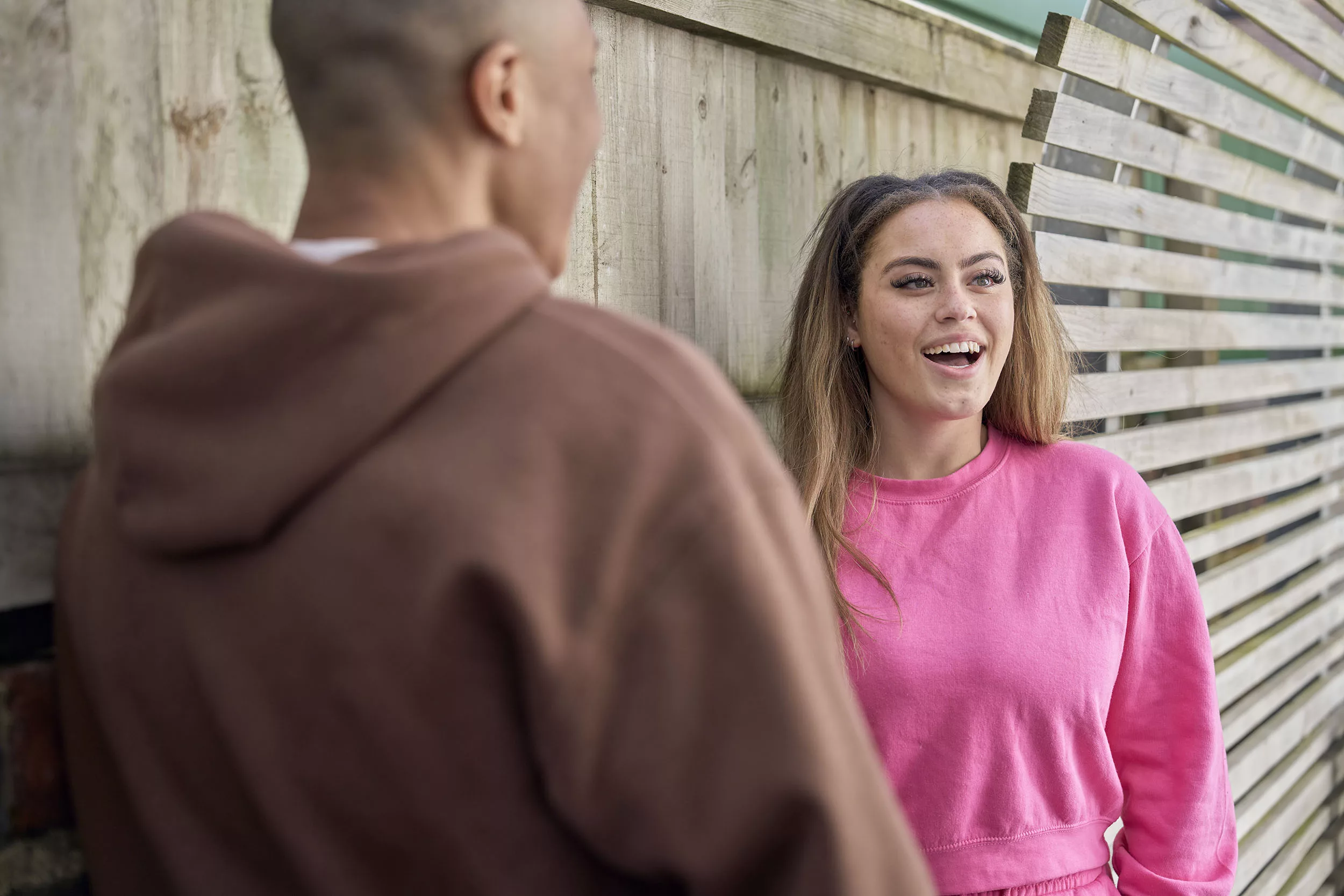
10. People can and do recover from child sexual abuse. Even small actions can make a big difference.
- With the right support, children and families can and do recover.
- If you are a professional working with a child who you think may have been sexually abused, a compassionate and consistent response – recognising and responding to signs of the abuse, providing space for the child to tell, and accepting what they say when they do tell – can help limit the impacts of abuse.
- Intervening early when there are concerns of child sexual abuse can reduce stress and anxiety for victims and survivors: for professionals it’s important to provide information about what to expect, secure timely care, respect victims’ and survivors’ wishes and preferences, create a child-friendly environment, and provide a non-judgemental, validating response.
For police professionals..
Involvement with the criminal justice system can be a negative experience for children who have been sexually abused: investigative processes can be distressing, disrupt engagement with education and affect relationships with family and friends, and the child may fear for their physical and emotional safety. As well as monitoring and addressing potential risks to the child, you can make the experience more positive by acknowledging their feelings, asking them about their fears and concerns, offering clear information about their rights, explaining clearly what is going to happen, being consistent, and providing opportunities where possible for them to have choice and control (by offering the choice of a female or male officer to talk to, and a trusted adult to be present if the child wants one, for example). It’s also important for you to keep any promises you make to the child and their family, and to be honest about confidentiality and its limits.
Early collaboration with the Crown Prosecution Service in building the case will lead to quicker decisions about charging, and will reduce any anxiety and reticence the child has about engaging with the criminal justice system. But be clear to the child and their family that it can take a long time for cases to proceed through the system, and ensure that you understand the CPS guidance on children’s access to counselling pre-trial.
If the CPS decides the case does not meet the statutory tests for prosecution and there is a decision for ‘No Further Police Action at this Time’, you can still consider the use of civil orders such as Sexual Harm Prevention Orders (if the suspect has a previous sexual conviction) or a Sexual Risk Order (which does not require there to be any sexual offending history).
Decisions to impose these orders are made on a balance of probabilities: under the Sexual Offences Act 2003 (sections 103A and 122A), they can be imposed when the criminal burden of proof is not met but there are concerns regarding the potential threats from identified person(s). Hearsay evidence and intelligence can be used to support a civil order application. See the Court orders and notices page within Authorised Professional Practice.
You can also seek to issue the suspect with a child abduction warning notice (CAWN), which informs them that they are not allowed to have any contact with a named child. Our report Police Disruption of Child Sexual Abuse: A Scoping Review contains more information about the use and effectiveness of CAWNs in relation to disrupting child sexual abuse.
In situations where you have concerns regarding child sexual exploitation, the Home Office’s child exploitation disruption toolkit contains a detailed list of actions you can take to disrupt the activity.
- Think about how you can provide hope. Children, young people and adults who have experienced sexual abuse report that they want professionals to have hope.
- When working with any child who has been sexually abused, it’s important to understand what has happened to the entire family to notice and challenge your own responses and maintain hope that the family can move forward. By doing so, you lay the groundwork to face what may initially seem like overwhelming challenges.
- Remember, sexual abuse thrives in secrecy. The more we talk about it, the more likely we are to notice signs of concern, take action to prevent abuse, to protect children when there are concerns and give them the support that they need.
For police professionals..
Some people who sexually abuse children appear to cooperate with professionals: they rely on the different professionals around the child not sharing information and concerns with one another, and not having the full picture. You will not have full sight of all aspects of the child’s life, so working with other professionals such as social workers, teachers and health workers will help you build a picture of concern and determine what actions need to be taken, by you and by them.
Helpful resources
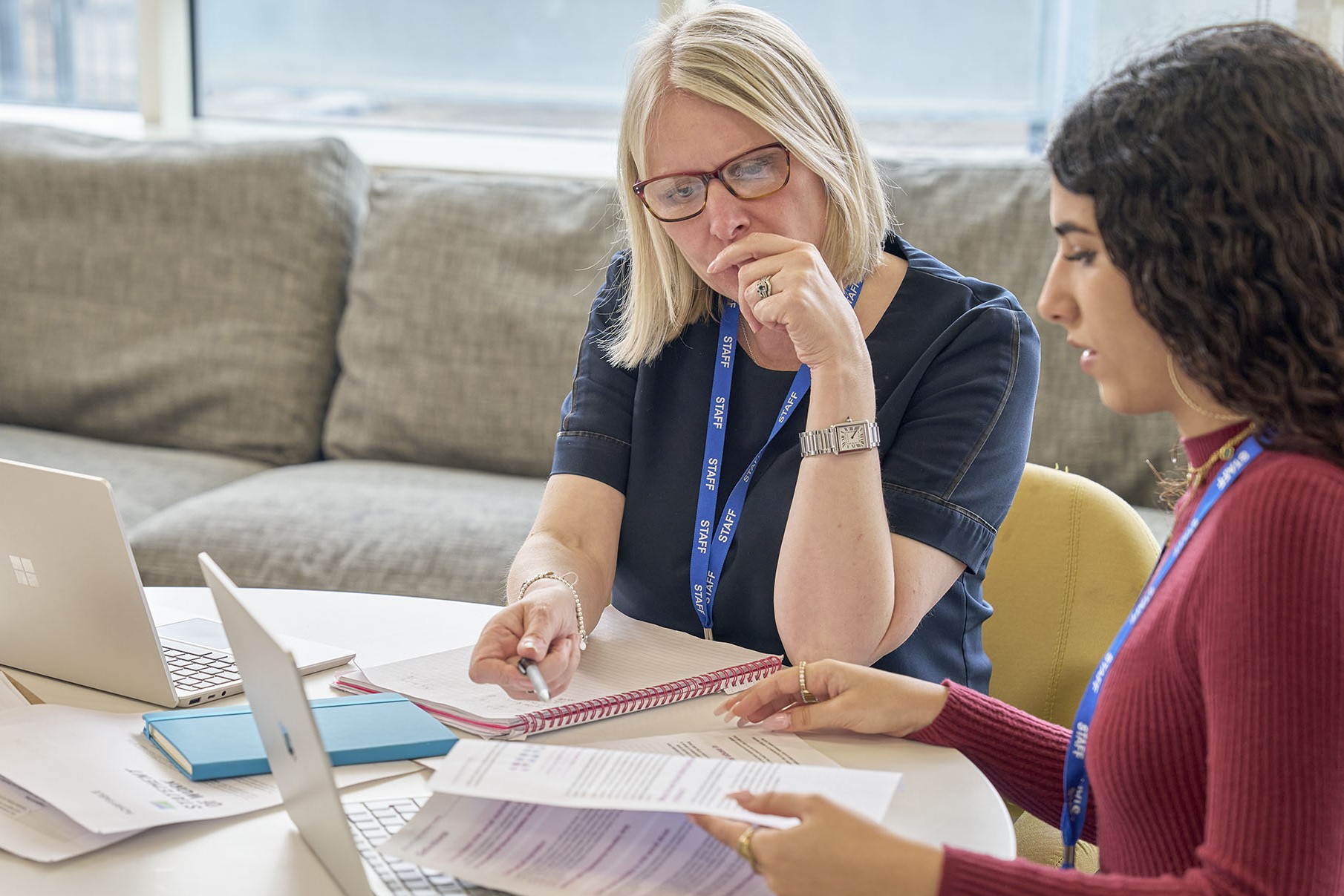
Key messages from research
Want to find more information? The ‘Key messages from research’ series provides succinct, easy-read summaries of the latest research in child sexual abuse to support confident, evidence-informed practice.

Signs and indicators template
The Signs and indicators template is designed to provide a common language among professionals to discuss, record and share concerns that a child is being, or has been, sexually abused.
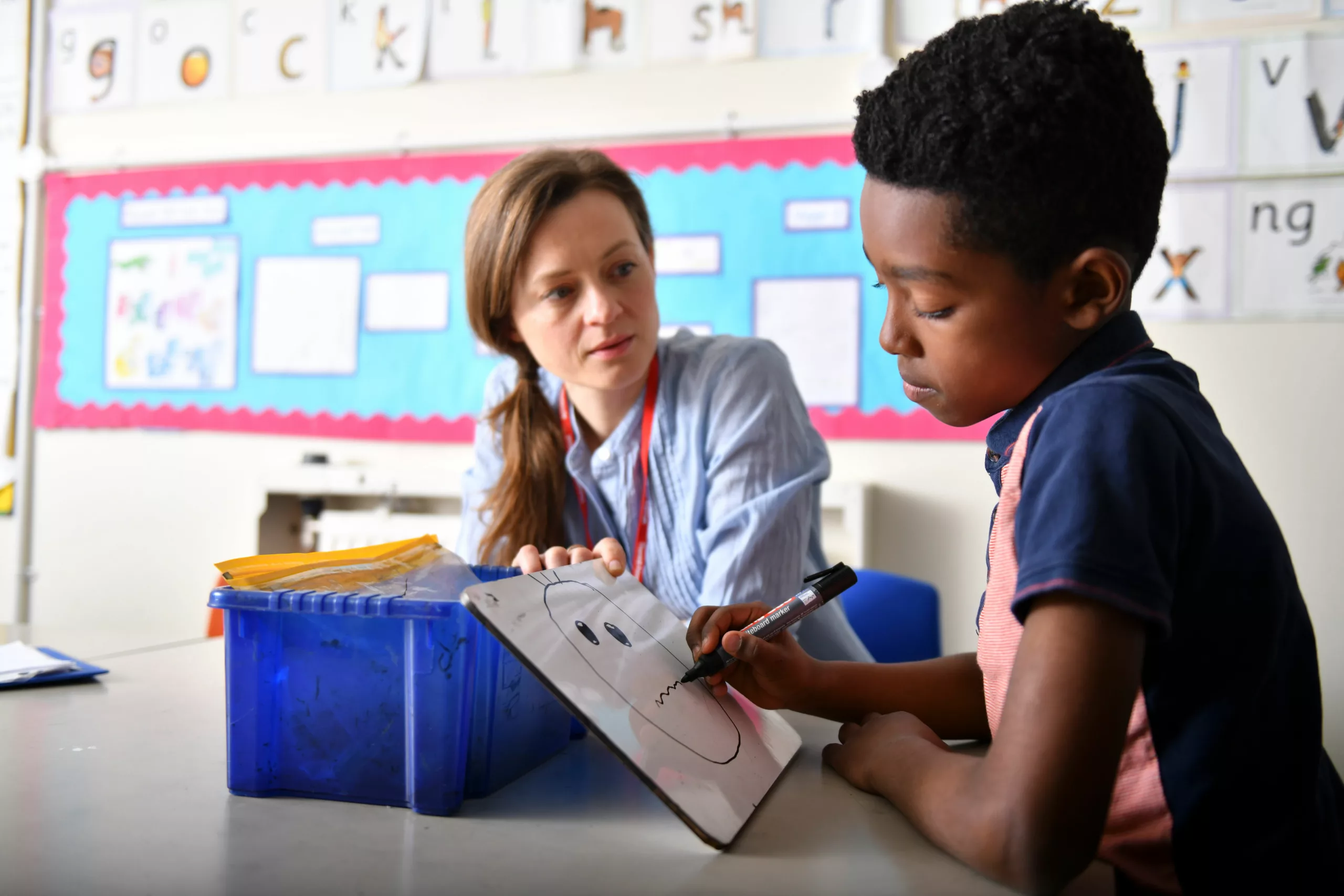
Communicating with children guide
The Communicating with children guide helps give all professionals – not just those in specific safeguarding roles – knowledge and confidence to talk to children about sexual abuse.

eLearning
Want to improve your understanding of one of the most common contexts of child sexual abuse? Try our free course for all professionals working with children on Identifying and responding to intra-familial child sexual abuse
